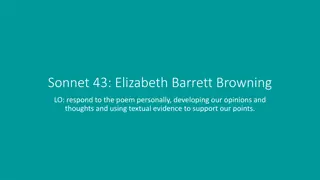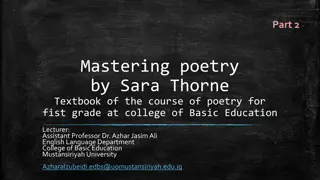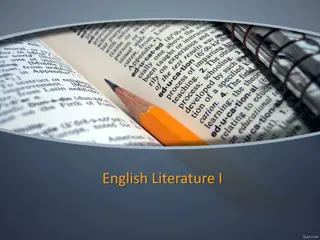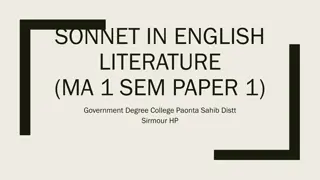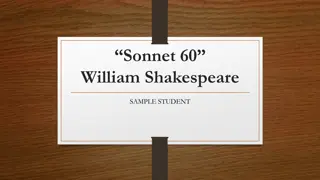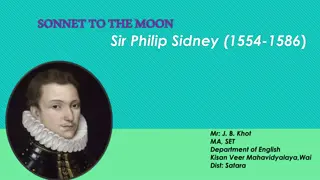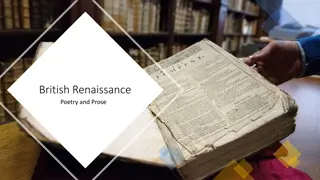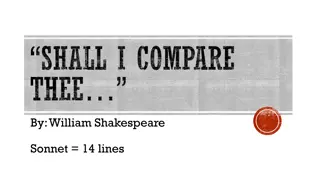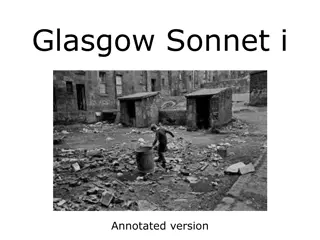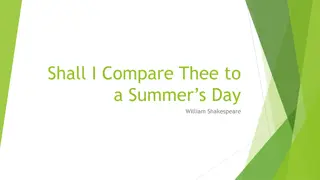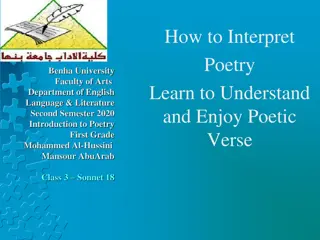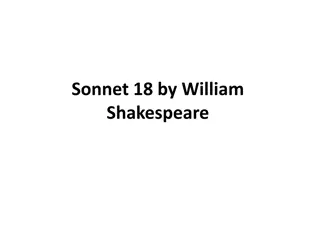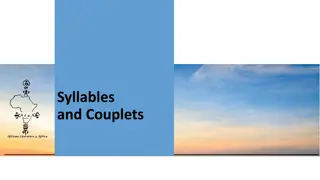
Shakespeare's Comparison of Love: Sonnet 116 vs. Sonnet 130
Explore how William Shakespeare contrasts love in Sonnet 116 and Sonnet 130, utilizing nature and time to convey his messages. Dive into themes, metaphors, symbolism, allusions, and personification to determine which sonnet is most effective in portraying the essence of love.
Download Presentation

Please find below an Image/Link to download the presentation.
The content on the website is provided AS IS for your information and personal use only. It may not be sold, licensed, or shared on other websites without obtaining consent from the author. If you encounter any issues during the download, it is possible that the publisher has removed the file from their server.
You are allowed to download the files provided on this website for personal or commercial use, subject to the condition that they are used lawfully. All files are the property of their respective owners.
The content on the website is provided AS IS for your information and personal use only. It may not be sold, licensed, or shared on other websites without obtaining consent from the author.
E N D
Presentation Transcript
Sonnet 116 & 130 William Shake
Sonnet 116 Sonnet 130 This poem is comparing his lover to other things His lover is not as nice as the other things The speaker details all the flaws of her body, her scent, the sound of her voice But, at the end of the poem, he tells us that he really loves her. This poem by William Shakespeare is about love in its most pristine form. He says that love bends but is forever constant. Love is a belief that guides our lives. No one has a value on love, but we take love to its limit. Love does not falter in time, but lasts until the end, through hard times. He concludes by saying that if he misjudged the meaning and value of love, then he takes back his writings and that no one has ever loved.
Literary Devices Metaphor- comparing two things without using like or as Symbolism- a literary technique the author uses in which one thing represents another Personification- giving human characteristics to non human things Theme- main idea Allusion- reference to another work of literature, most often the bible.
Classwork Compare and contrast the two sonnets (116 & 130) Sonnets 116 and 130 all express ideas about love, but in different ways. Explain how Shakespeare uses nature and time to convey his ideas. Which sonnet is most effective in your opinion? Be sure to support your claims with evidence from the poems. Be sure to incorporate the following literary devices in your response: theme, metaphor, symbolism, allusion and personification


